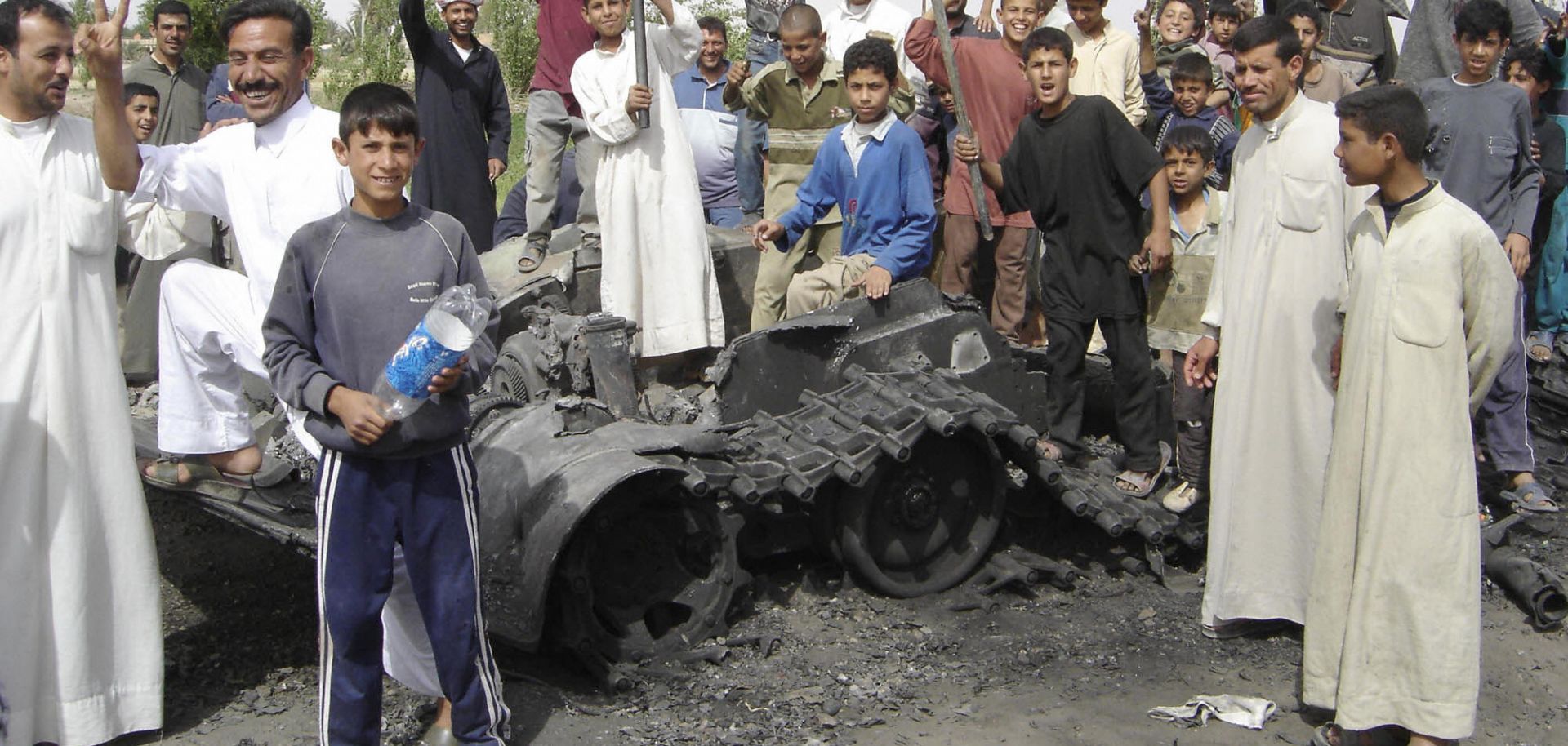ASSESSMENTS
Disrupting the Desert 'Rat Lines' in Western Iraq
May 11, 2005 | 04:00 GMT

KARABLA, Iraq: Iraqis cheer as they pose for the camera near what they say is a destroyed US military vehicle in Karabla in the al-Qaim district close to the Syrian Iraqi border, 15 May 2005. The vehicle was destroyed during the week-long US military offensive code-named 'Operation Matador' in the al-Qaim area 350 kilometres (280 miles) west of Baghdad, in the Sunni al-Anbar province. The large-scale offensive was launched to flush insurgents out of the area and disrupt their supply routes to Syria, ended yesterday, the military announced AFP PHOTO/ALI KAMAR (Photo credit should read ALI KAMAR/AFP/Getty Images)
Summary
On May 7, U.S. forces in western Iraq began a major offensive dubbed "Operation Matador" against jihadist insurgents. Led by elements of the 2nd Marine Division, the operation centers on northwestern Al Anbar province and seeks to deny insurgents — especially Abu Musab al-Zarqawi's al Qaeda-linked militant group — a safe haven in the area. With al-Zarqawi's lieutenants captured and his plans compromised, the operation puts significant pressure on jihadist militants in Iraq.
Subscribe Now
SubscribeAlready have an account?
